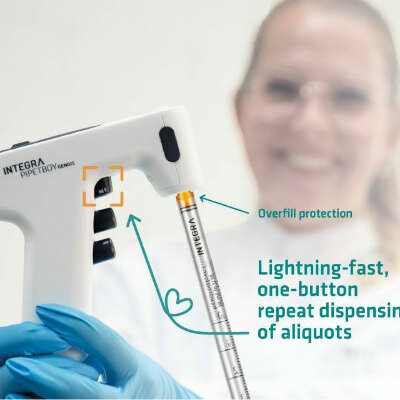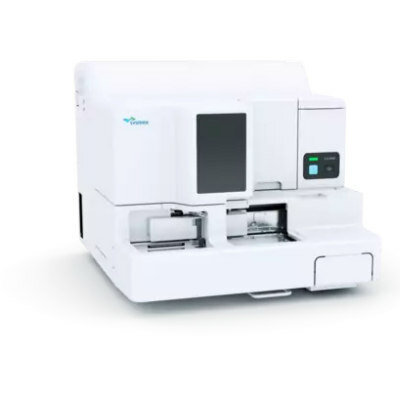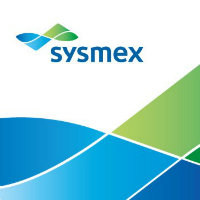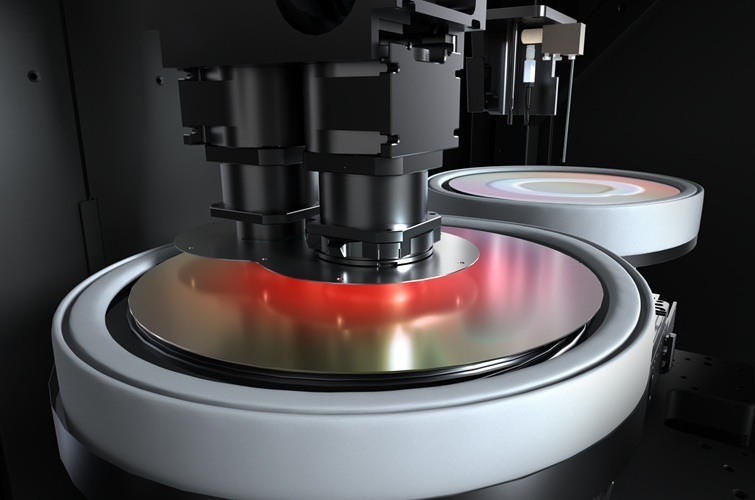Fecal Microbes Used to Diagnose Liver Cirrhosis
|
By LabMedica International staff writers Posted on 09 Apr 2019 |
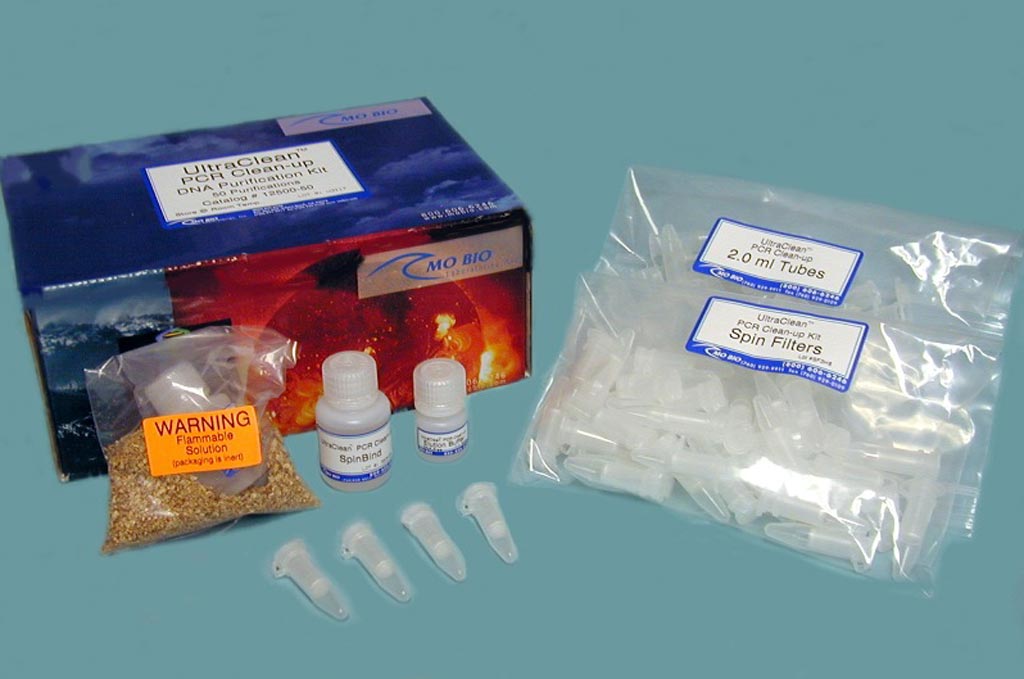
Image: The UltraClean PCR cleanup kit (Photo courtesy of MO BIO Laboratories).
Nonalcoholic fatty liver disease (NAFLD) is the most prevalent cause of chronic liver disease worldwide, and yet remains largely underdiagnosed even in individuals with advanced stage of the disease.
NAFLD-cirrhosis represents the most severe stage of the disease, carries a significant risk of hepatocellular carcinoma (HCC), and is consistently identified as the most important predictor of liver-related morbidity-mortality in NAFLD.
Medical scientists at the University of California San Diego (La Jolla, CA, USA) and their associates analyzed the microbial makeup of stool samples from 98 people known to have some form of NAFLD and 105 of their first-degree relatives, including some twins. The study included 26 probands with NAFLD-cirrhosis and 37 of their first-degree relatives. At the time of each visit, patients provided stool samples. These were collected and immediately stored in a −80 °C freezer.
DNA extraction and 16S rRNA amplicon sequencing were done and DNA was extracted using the Qiagen MagAttract PowerSoil DNA kit. Amplicon PCR was performed on the V4 region of the 16S rRNA gene using the primer pair 515 f to 806r with Golay error-correcting barcodes on the reverse primer. Amplicons were barcoded and pooled in equal concentrations for sequencing. The amplicon pool was purified with the MO BIO UltraClean PCR cleanup kit and sequenced on the MiSeq sequencing platform.
The team identified 27 unique bacterial features unique to the gut microbiomes from stools of people with NAFLD-cirrhosis. They were able to use this noninvasive stool test to pick out the people with known NAFLD-cirrhosis with 92% accuracy, but more importantly, the test allowed them to differentiate the first-degree relative with previously undiagnosed NAFLD-cirrhosis with 87% accuracy. The results were confirmed by magnetic resonance imaging (MRI).
At the genus level, both NAFLD-cirrhosis and NAFLD without advanced fibrosis group were enriched with Streptococcus, but only the NAFLD-cirrhosis group was enriched with Megasphaera. Species belonging to the family Enterobacteriaceae and the genera Streptococcus and Gallibacterium were the most enriched in NAFLD-cirrhosis, while Faecalibacterium prausnitzii and species belonging to the genus, Catenibacterium and the families Rikenellaceae, Mogibacterium, Peptostreptococcaceae were enriched in non-NAFLD controls.
Rohit Loomba, MD, a professor of medicine and senior author of the study, said, “If we are better able to diagnose NAFLD-related cirrhosis, we will be better at enrolling the right types of patients in clinical trials, and ultimately will be better equipped to prevent and treat it. This latest advance toward a noninvasive stool test for NAFLD-cirrhosis may also help pave the way for other microbiome-based diagnostics and therapeutics, and better enable us to provide personalized, or precision, medicine for a number of conditions.” The study was published on March 29, 2019, in the journal Nature Communications.
Related Links:
University of California San Diego
NAFLD-cirrhosis represents the most severe stage of the disease, carries a significant risk of hepatocellular carcinoma (HCC), and is consistently identified as the most important predictor of liver-related morbidity-mortality in NAFLD.
Medical scientists at the University of California San Diego (La Jolla, CA, USA) and their associates analyzed the microbial makeup of stool samples from 98 people known to have some form of NAFLD and 105 of their first-degree relatives, including some twins. The study included 26 probands with NAFLD-cirrhosis and 37 of their first-degree relatives. At the time of each visit, patients provided stool samples. These were collected and immediately stored in a −80 °C freezer.
DNA extraction and 16S rRNA amplicon sequencing were done and DNA was extracted using the Qiagen MagAttract PowerSoil DNA kit. Amplicon PCR was performed on the V4 region of the 16S rRNA gene using the primer pair 515 f to 806r with Golay error-correcting barcodes on the reverse primer. Amplicons were barcoded and pooled in equal concentrations for sequencing. The amplicon pool was purified with the MO BIO UltraClean PCR cleanup kit and sequenced on the MiSeq sequencing platform.
The team identified 27 unique bacterial features unique to the gut microbiomes from stools of people with NAFLD-cirrhosis. They were able to use this noninvasive stool test to pick out the people with known NAFLD-cirrhosis with 92% accuracy, but more importantly, the test allowed them to differentiate the first-degree relative with previously undiagnosed NAFLD-cirrhosis with 87% accuracy. The results were confirmed by magnetic resonance imaging (MRI).
At the genus level, both NAFLD-cirrhosis and NAFLD without advanced fibrosis group were enriched with Streptococcus, but only the NAFLD-cirrhosis group was enriched with Megasphaera. Species belonging to the family Enterobacteriaceae and the genera Streptococcus and Gallibacterium were the most enriched in NAFLD-cirrhosis, while Faecalibacterium prausnitzii and species belonging to the genus, Catenibacterium and the families Rikenellaceae, Mogibacterium, Peptostreptococcaceae were enriched in non-NAFLD controls.
Rohit Loomba, MD, a professor of medicine and senior author of the study, said, “If we are better able to diagnose NAFLD-related cirrhosis, we will be better at enrolling the right types of patients in clinical trials, and ultimately will be better equipped to prevent and treat it. This latest advance toward a noninvasive stool test for NAFLD-cirrhosis may also help pave the way for other microbiome-based diagnostics and therapeutics, and better enable us to provide personalized, or precision, medicine for a number of conditions.” The study was published on March 29, 2019, in the journal Nature Communications.
Related Links:
University of California San Diego
Latest Microbiology News
- Handheld Device Delivers Low-Cost TB Results in Less Than One Hour
- New AI-Based Method Improves Diagnosis of Drug-Resistant Infections
- Breakthrough Diagnostic Technology Identifies Bacterial Infections with Almost 100% Accuracy within Three Hours
- Innovative ID/AST System to Help Diagnose Infectious Diseases and Combat AMR
- Gastrointestinal Panel Delivers Rapid Detection of Five Common Bacterial Pathogens for Outpatient Use
- Rapid PCR Testing in ICU Improves Antibiotic Stewardship
- Unique Genetic Signature Predicts Drug Resistance in Bacteria
- Unique Barcoding System Tracks Pneumonia-Causing Bacteria as They Infect Blood Stream
- Rapid Sepsis Diagnostic Test Demonstrates Improved Patient Care and Cost Savings in Hospital Application
- Rapid Diagnostic System to Detect Neonatal Sepsis Within Hours
- Novel Test to Diagnose Bacterial Pneumonia Directly from Whole Blood
- Interferon-γ Release Assay Effective in Patients with COPD Complicated with Pulmonary Tuberculosis
- New Point of Care Tests to Help Reduce Overuse of Antibiotics
- 30-Minute Sepsis Test Differentiates Bacterial Infections, Viral Infections, and Noninfectious Disease
- CRISPR-TB Blood Test to Enable Early Disease Diagnosis and Public Screening
- Syndromic Panel Provides Fast Answers for Outpatient Diagnosis of Gastrointestinal Conditions
Channels
Clinical Chemistry
view channel
‘Brilliantly Luminous’ Nanoscale Chemical Tool to Improve Disease Detection
Thousands of commercially available glowing molecules known as fluorophores are commonly used in medical imaging, disease detection, biomarker tagging, and chemical analysis. They are also integral in... Read more
Low-Cost Portable Screening Test to Transform Kidney Disease Detection
Millions of individuals suffer from kidney disease, which often remains undiagnosed until it has reached a critical stage. This silent epidemic not only diminishes the quality of life for those affected... Read more
New Method Uses Pulsed Infrared Light to Find Cancer's 'Fingerprints' In Blood Plasma
Cancer diagnoses have traditionally relied on invasive or time-consuming procedures like tissue biopsies. Now, new research published in ACS Central Science introduces a method that utilizes pulsed infrared... Read moreHematology
view channel
New Scoring System Predicts Risk of Developing Cancer from Common Blood Disorder
Clonal cytopenia of undetermined significance (CCUS) is a blood disorder commonly found in older adults, characterized by mutations in blood cells and a low blood count, but without any obvious cause or... Read more
Non-Invasive Prenatal Test for Fetal RhD Status Demonstrates 100% Accuracy
In the United States, approximately 15% of pregnant individuals are RhD-negative. However, in about 40% of these cases, the fetus is also RhD-negative, making the administration of RhoGAM unnecessary.... Read moreImmunology
view channel
Stem Cell Test Predicts Treatment Outcome for Patients with Platinum-Resistant Ovarian Cancer
Epithelial ovarian cancer frequently responds to chemotherapy initially, but eventually, the tumor develops resistance to the therapy, leading to regrowth. This resistance is partially due to the activation... Read more
Machine Learning-Enabled Blood Test Predicts Immunotherapy Response in Lymphoma Patients
Chimeric antigen receptor (CAR) T-cell therapy has emerged as one of the most promising recent developments in the treatment of blood cancers. However, over half of non-Hodgkin lymphoma (NHL) patients... Read moreMicrobiology
view channel
Handheld Device Delivers Low-Cost TB Results in Less Than One Hour
Tuberculosis (TB) remains the deadliest infectious disease globally, affecting an estimated 10 million people annually. In 2021, about 4.2 million TB cases went undiagnosed or unreported, mainly due to... Read more
New AI-Based Method Improves Diagnosis of Drug-Resistant Infections
Drug-resistant infections, particularly those caused by deadly bacteria like tuberculosis and staphylococcus, are rapidly emerging as a global health emergency. These infections are more difficult to treat,... Read more
Breakthrough Diagnostic Technology Identifies Bacterial Infections with Almost 100% Accuracy within Three Hours
Rapid and precise identification of pathogenic microbes in patient samples is essential for the effective treatment of acute infectious diseases, such as sepsis. The fluorescence in situ hybridization... Read morePathology
view channel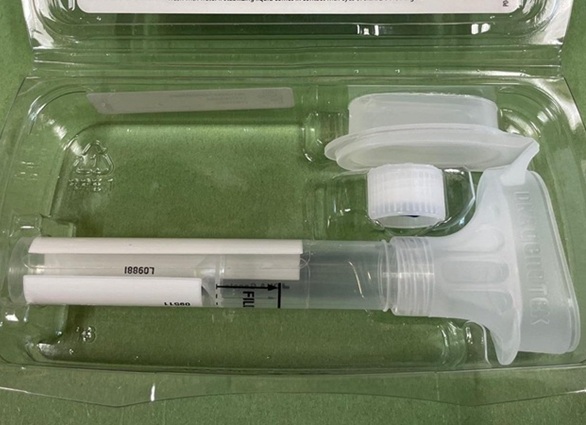
Spit Test More Accurate at Identifying Future Prostate Cancer Risk
Currently, blood tests that measure the level of a protein called prostate-specific antigen (PSA) are commonly used to identify men at higher risk for prostate cancer. This test is typically used based... Read moreDNA Nanotechnology Boosts Sensitivity of Test Strips
Since the Covid-19 pandemic, most people have become familiar with paper-based rapid test strips, also known as lateral flow immunoassays (LFIAs). These tests are used to quickly detect biomarkers that... Read more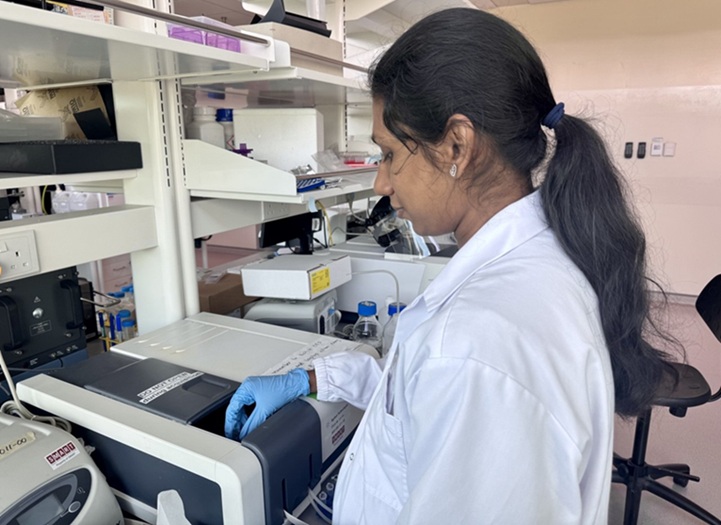
Novel UV and Machine Learning-Aided Method Detects Microbial Contamination in Cell Cultures
Cell therapy holds great potential in treating diseases such as cancers, inflammatory conditions, and chronic degenerative disorders by manipulating or replacing cells to restore function or combat disease.... Read moreTechnology
view channel
Disposable Microchip Technology Could Selectively Detect HIV in Whole Blood Samples
As of the end of 2023, approximately 40 million people globally were living with HIV, and around 630,000 individuals died from AIDS-related illnesses that same year. Despite a substantial decline in deaths... Read more
Pain-On-A-Chip Microfluidic Device Determines Types of Chronic Pain from Blood Samples
Chronic pain is a widespread condition that remains difficult to manage, and existing clinical methods for its treatment rely largely on self-reporting, which can be subjective and especially problematic... Read more
Innovative, Label-Free Ratiometric Fluorosensor Enables More Sensitive Viral RNA Detection
Viruses present a major global health risk, as demonstrated by recent pandemics, making early detection and identification essential for preventing new outbreaks. While traditional detection methods are... Read moreIndustry
view channel
Cepheid and Oxford Nanopore Technologies Partner on Advancing Automated Sequencing-Based Solutions
Cepheid (Sunnyvale, CA, USA), a leading molecular diagnostics company, and Oxford Nanopore Technologies (Oxford, UK), the company behind a new generation of sequencing-based molecular analysis technologies,... Read more
Grifols and Tecan’s IBL Collaborate on Advanced Biomarker Panels
Grifols (Barcelona, Spain), one of the world’s leading producers of plasma-derived medicines and innovative diagnostic solutions, is expanding its offer in clinical diagnostics through a strategic partnership... Read more




